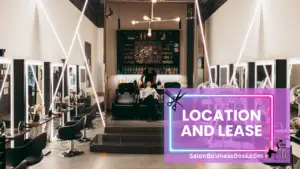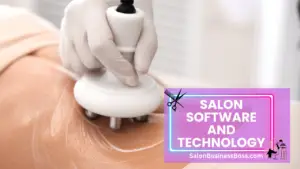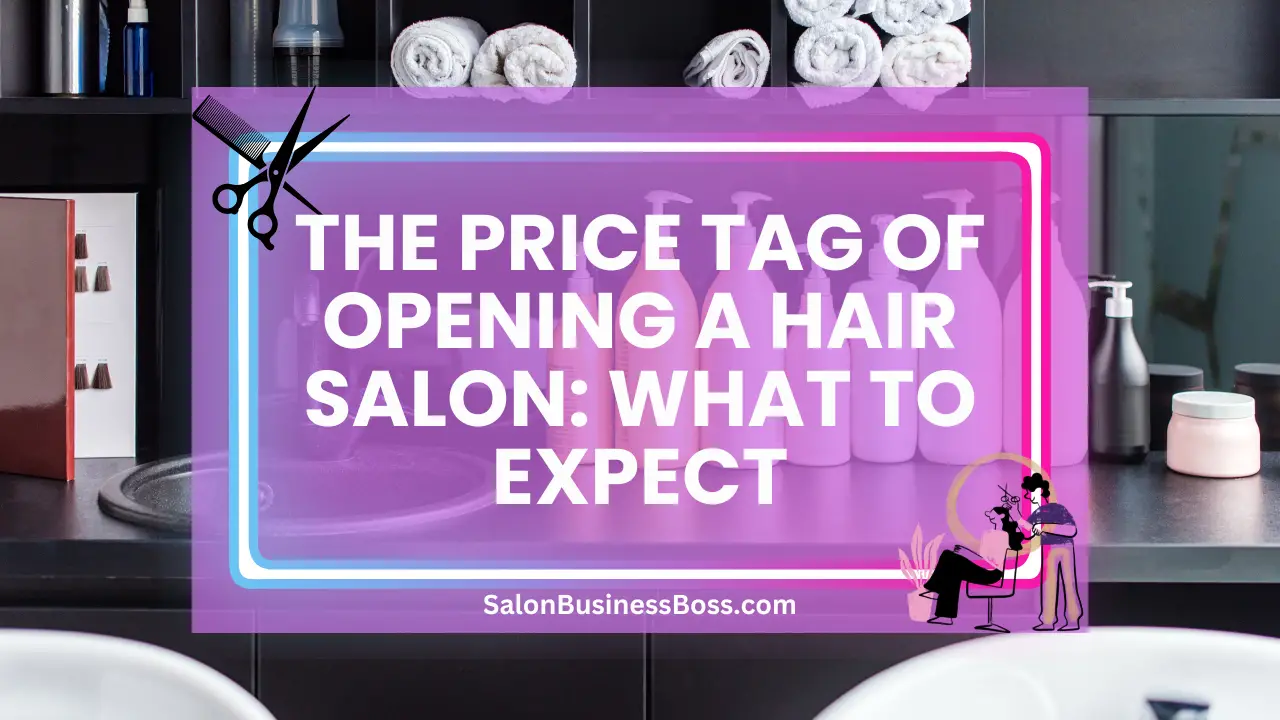Opening a hair salon can be a dream come true for many aspiring entrepreneurs, but it requires careful financial planning and investment. While the allure of running a successful salon is undeniable, the cost of starting one can be quite substantial.
Cost to open a hair salon is around $100,000, with major expenses including location lease, equipment, inventory, marketing, staff salaries, and contingency funds. Careful planning is essential for a successful venture in the competitive beauty industry.
1. Location and Lease (Approximately $20,000):

Securing a prime location is a crucial step and often the first major expense in opening a hair salon. The location plays a pivotal role in determining the salon’s visibility, accessibility, and potential customer base. A well-chosen location with high foot traffic can significantly impact the salon’s success and profitability.
When searching for the ideal location, salon owners must consider various factors, such as the demographics of the area, nearby businesses, and the target market they aim to serve. It’s essential to choose a location that aligns with the salon’s brand and caters to the preferences of the intended clientele.
The cost of securing a suitable commercial property varies depending on the region and the size of the space leased. High-demand urban areas or trendy neighborhoods might command higher rents compared to suburban or less sought-after locations. Additionally, the size of the salon and the amenities provided within the property can also influence the lease cost.
An initial upfront expense of up to $20,000 is not uncommon for leasing a location for a hair salon. This amount covers the first few months’ rent, security deposit, and any associated fees. While the cost may seem significant, investing in a prime location can prove to be a prudent decision as it can attract more clients and contribute to the salon’s long-term success.
Finding the right balance between budget and location is essential. Salon owners should conduct thorough research, negotiate favorable lease terms, and consider potential growth opportunities before finalizing the location. By making a well-informed decision in this critical aspect of the salon’s setup, owners can lay a strong foundation for a thriving and prosperous hair salon venture.
Read more about: Setting Up a Hair Salon: Practices and Strategies
2. Salon Equipment and Furnishings (Approximately $30,000):
Equipping a hair salon with the necessary furniture and salon equipment is a significant investment that directly impacts the salon’s functionality and aesthetic appeal. The salon’s atmosphere plays a vital role in attracting and retaining clients, making high-quality equipment and furnishings essential for creating a positive customer experience.
Among the essential salon equipment are hairdressing chairs that offer comfort and support for both clients and stylists. Stylish and functional mirrors are crucial for clients to see the hair transformations during their salon visit. Washing stations equipped with ergonomic chairs and hair-washing sinks ensure a relaxing and convenient experience for clients.
Investing in professional-grade hairdryers, curling irons, flat irons, and styling tools is essential for achieving desired hairstyles and delivering top-notch services. The salon should also allocate funds for a reception area furnished with comfortable waiting chairs to accommodate clients while they wait for their appointments.
The cost of acquiring high-quality salon equipment and furnishings can add up to around $30,000. However, it is an investment that pays off in the long run, as it enhances the salon’s overall ambiance and sets the stage for exceptional customer satisfaction.
3. Inventory and Products (Approximately $10,000):
Stocking an impressive inventory of hair products is crucial for a hair salon to cater to the diverse needs of its clients. The initial investment in salon inventory could easily reach up to $10,000, depending on the variety and quantity of products purchased.
A well-rounded inventory includes a selection of shampoos, conditioners, hair dyes, styling products, and hair accessories from reputable brands. The inventory should cater to different hair types, including products for dry, oily, curly, straight, and colored hair. Investing in premium and trusted brands enhances the salon’s credibility and builds trust with clients.
Maintaining a well-stocked inventory ensures that stylists have the necessary products at their disposal to offer a wide range of hair services. It also enables the salon to retail products, creating an additional revenue stream.
Regularly monitoring inventory levels and replenishing stock as needed is essential to ensure that clients can access their preferred hair products consistently. By allocating around $10,000 for initial salon inventory, owners can establish a solid foundation for offering exceptional services and meeting the unique hair care needs of their clientele.
4. Salon Licenses and Permits (Approximately $2,000):
Ensuring compliance with local regulations is a non-negotiable aspect of opening a hair salon. Acquiring the necessary licenses and permits demonstrates the salon’s legitimacy, adherence to health and safety standards, and commitment to operating within the legal framework.
The process of obtaining salon licenses and permits may involve navigating complex legal requirements, which could benefit from seeking professional legal assistance. Legal counsel can guide salon owners through the necessary paperwork, ensuring that all required documents are filed correctly and on time.
The cost of obtaining licenses and permits can vary based on the location and specific regulations governing the beauty industry in that area. Some common licenses may include a business license, health and safety permits, and cosmetology licenses for staff. Additionally, there may be fees associated with inspections and renewals.
On average, salon owners should budget around $2,000 for acquiring the necessary licenses and permits. While this may seem like an additional expense, it is a critical investment that ensures the salon operates lawfully and instills confidence in both clients and stakeholders.
5. Salon Software and Technology (Approximately $5,000):

In the fast-paced and digitally connected world, salon management software has become a valuable tool for streamlining salon operations and enhancing customer experience. Investing in salon software can revolutionize appointment scheduling, client management, inventory tracking, and marketing efforts.
Salon management software provides a centralized platform to manage appointments efficiently, reducing scheduling conflicts and minimizing no-shows. It also allows for client management, storing valuable information like contact details, service history, and product preferences, enabling personalized services and building customer loyalty.
With inventory tracking capabilities, salon software ensures optimal stock management, preventing overstocking or running out of essential products. Moreover, software equipped with point-of-sale features enables seamless transactions and accurate billing.
The cost of salon software can vary based on the chosen provider and the features included in the package. Basic software packages may start at around $2,000, while more comprehensive solutions with advanced functionalities can reach up to $5,000.
The initial investment in salon software may seem substantial, but the long-term benefits in terms of operational efficiency and improved customer service can lead to significant returns on investment. By embracing technology, hair salon owners can position their businesses for success in a competitive industry while offering their clients a modern and seamless salon experience.
Read more about: Setting Up a Hair Salon: Practices and Strategies
6. Marketing and Advertising (Approximately $8,000):
In the fiercely competitive beauty industry, effective marketing and advertising are essential for a hair salon to stand out and attract a steady flow of clients. Allocating a portion of the budget, typically around $8,000, for marketing efforts during the salon’s initial stages can significantly impact its visibility and success.
A well-rounded marketing strategy encompasses various elements, starting with creating a visually appealing and user-friendly salon website. The website serves as an online storefront, showcasing the salon’s services, staff, and testimonials from satisfied clients.
Print materials like business cards and flyers play a vital role in promoting the salon locally. Distributing these materials strategically in nearby neighborhoods, shopping centers, and community events can help capture the attention of potential clients.
Social media marketing is another powerful tool to engage with the target audience. Maintaining active social media profiles on platforms like Instagram and Facebook allows the salon to showcase its work, share before-and-after transformations, and run promotional campaigns.
Investing in local advertising, such as newspaper ads or radio spots, can also contribute to the salon’s visibility within the community.
7. Staff Salaries and Training (Approximately $15,000):
The success of a hair salon heavily relies on the expertise and skills of its hairstylists and staff. Allocating funds for staff salaries is essential, particularly during the initial months when the salon is building its clientele. Competitive salaries attract skilled hairstylists and motivate them to deliver exceptional services.
Moreover, investing in ongoing training and development programs for the staff is crucial. The beauty industry is ever-evolving, with new trends and techniques emerging regularly. Continuous training ensures that the salon remains up-to-date with the latest industry trends, enhances the staff’s skillset, and improves the overall quality of services provided.
A well-trained team contributes to customer satisfaction and positive word-of-mouth referrals, which are invaluable for the salon’s growth and reputation.
8. Insurance and Contingency Funds (Approximately $5,000):
Running a hair salon involves inherent risks, ranging from potential accidents during salon operations to unforeseen property damage or liabilities. Acquiring comprehensive business insurance is essential to protect the salon against such risks.
Allocating around $5,000 for insurance coverage is a wise investment that provides financial security in case of emergencies. General liability insurance and property insurance are common types of coverage that offer protection against bodily injury, property damage, and legal expenses.
Creating a contingency fund is prudent. A contingency fund serves as a financial safety net to cover unexpected expenses or address any financial challenges that may arise during the salon’s early stages of operation. Setting aside funds for contingency purposes ensures that the salon can weather any unforeseen financial storms and continue to thrive in the long run.
Conclusion
Opening a hair salon requires a considerable financial investment, with an average cost of up to $100,000. This comprehensive breakdown demonstrates that various aspects must be taken into account when creating a budget. While the initial costs may seem daunting, a well-planned investment can lead to a thriving and successful hair salon. By understanding the expenses involved, aspiring salon owners can embark on this exciting venture with confidence and set themselves up for success in the competitive beauty industry.
Frequently Asked Questions

1. Can I finance the salon’s setup costs through loans?
Yes, many entrepreneurs secure loans to cover initial setup costs. Ensure a solid business plan and repayment strategy before taking on debt.
2. Should I offer specialized services to attract more clients?
Offering specialized services can set your salon apart from competitors, but it’s essential to research the demand and ensure trained staff is available.
3. Can I save on costs by hiring unlicensed stylists?
Hiring licensed and trained stylists ensures professionalism and compliance with industry standards. Avoid cutting corners and prioritize customer satisfaction.
To learn more on how to start you own salon checkout my startup documents here.
Please note that the contents of this blog are for informational and entertainment purposes only and should not be construed as legal advice. Any action taken based on the information provided in this blog is solely at your own risk. Additionally, all images used in this blog are generated under the CC0 license of Creative Commons, which means they are free to use for any purpose without attribution.

About the author. Entrepreneur and Salon Business Fan.
Hi! I am Shawn and I am a happy individual who happens to be an entrepreneur. I have owned several types of businesses in my life from a coffee shop to an import and export business to an online review business plus a few more and now I create online salon business resources for those interested in starting new ventures. It’s demanding work but I love it. I do it for those passionate about their business and their goals. That’s why when I meet a salon business owner, I see myself. I know how hard the struggle is to retain clients, find good employees and keep the business growing all while trying to stay competitive.
That’s why I created Salon Business Boss: I want to help salon business owners like you build a thriving business that brings you endless joy and supports your ideal lifestyle.

